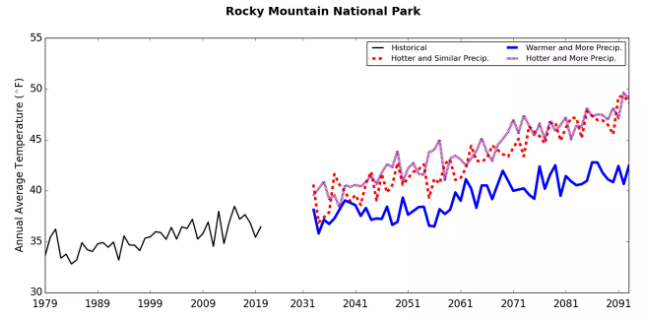
Climate Change and Adaptation
Understanding the impacts of climate change on Rocky Mountain National Park and the strategies for adaptation.
Climate Changes In Rocky Mountain National Park
Rocky Mountain National Park is experiencing significant climate shifts that will transform its ecosystems. These changes are already visible and are projected to accelerate in the coming decades.

Figure 1. Historical annual average temperatures (black; annual average of daily average temperatures) and three projections (red, purple, blue) at Bear Lake in Rocky Mountain National Park.
Key Climate Indicators
All climate models predict a rise in average annual temperatures within RMNP from 1°C to 6°C
The park is expected to experience approximately 35 to 80 fewer days with freezing temperatures annually
Warmer conditions will likely extend the plant growing season by up to two months
All climate models predict a rise in average annual temperatures within RMNP from 1°C to 6°C
Adaptation Strategies
How the indigineous tribes of the rocky mountains are adapting to climate change


